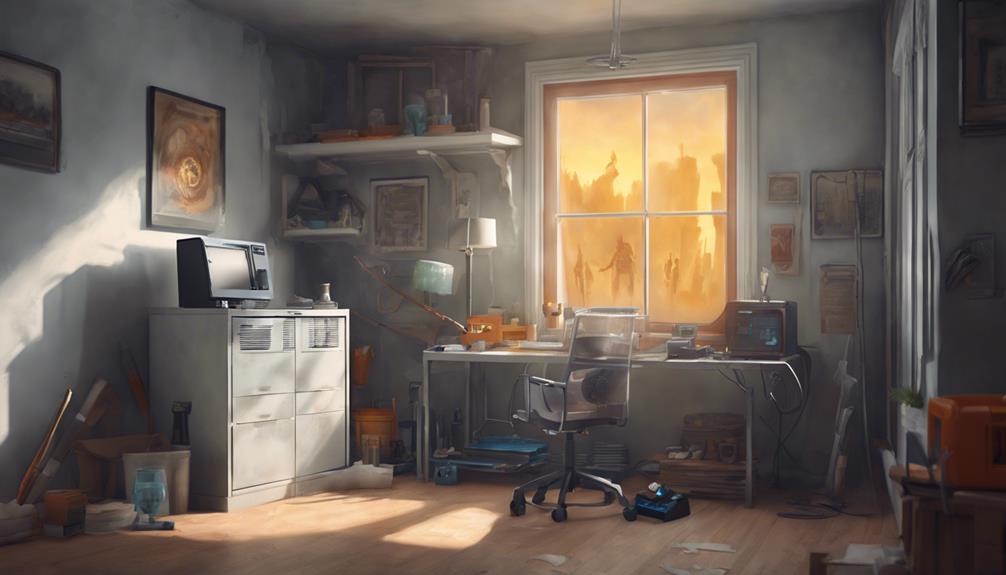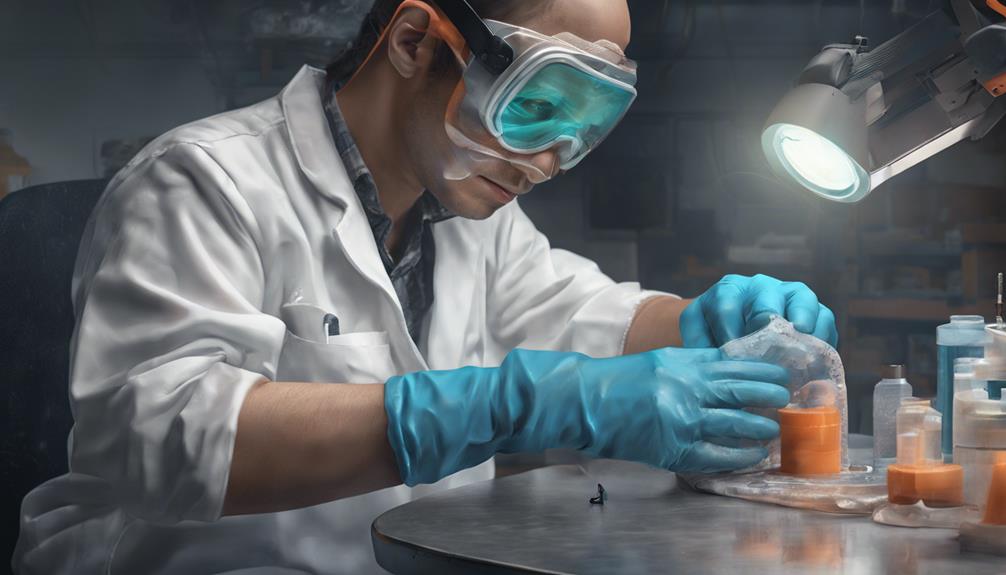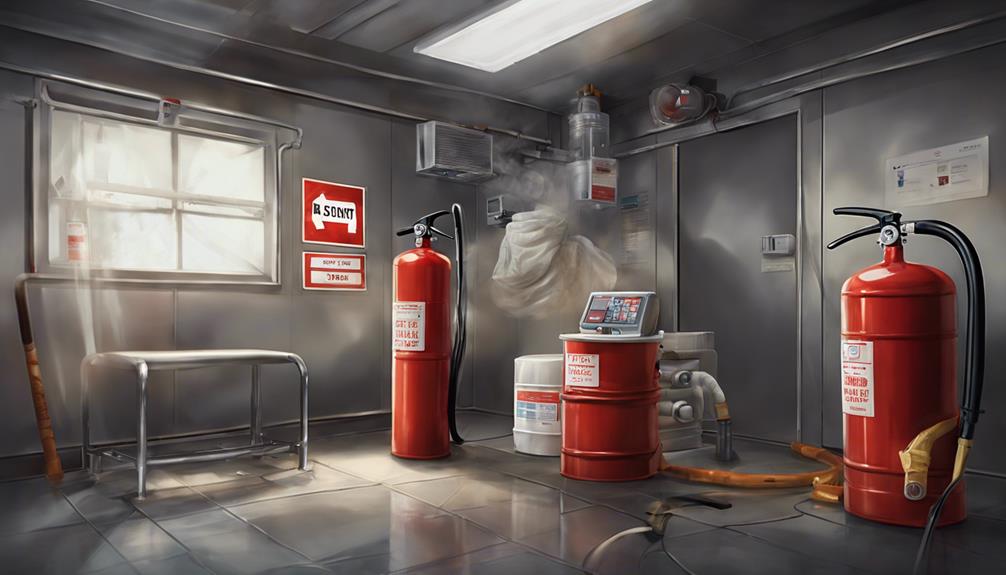In the domain of home 3D printing, ensuring safety measures is paramount to a smooth and secure printing experience. From selecting the appropriate filament to preventing potential hazards, there are various aspects to take into account when starting on this creative journey. By understanding the risks associated with 3D printing and implementing proactive safety protocols, enthusiasts can safeguard themselves and their surroundings from potential harm. Let's explore some key safety measures that every home 3D printer should be aware of to foster a safe and productive printing environment.
Proper Printer Placement and Ventilation

Proper printer placement and ventilation are vital safety measures to mitigate risks associated with 3D printing at home. When situating your 3D printer, make sure it is on a stable surface away from flammable materials and out of reach of children and pets to prevent accidents.
Adequate ventilation is essential to disperse potentially harmful fumes and particles emitted during the printing process. Consider placing the printer near a window or using a ventilation system to maintain a steady airflow.
Safety Measures for Filament Selection
When considering safety in 3D printing, a critical aspect to address is the selection of filaments that align with indoor usage guidelines and minimize potential health risks. It is important to prioritize safety when choosing filaments for home printing.
PLA is considered the safest option, while ABS and ASA emit toxic substances and should be avoided indoors. PETG and TPU are suitable for indoor use as they emit low toxic gases.
Nylon is stable and safe for indoor printing, while Polycarbonate contains harmful substances and should be used with caution indoors. Selecting filaments based on their emissions and safety profiles, as well as adhering to manufacturer's guidelines, is crucial to maintain a safe 3D printing environment.
Preventing Skin Burns and Injuries

What precautions should be taken to prevent skin burns and injuries during 3D printing processes?
Skin burns and injuries can occur during 3D printing, especially when dealing with hot printer components and moving parts. To prevent such incidents, it is important to wear appropriate protective gear such as heat-resistant gloves when handling heated components. Additionally, ensuring that the printer is placed on a stable surface away from the edge can prevent accidental contact.
Regularly checking and maintaining the printer's components for any signs of wear or damage can also help in preventing unexpected malfunctions that could lead to injuries. Being cautious and attentive during the printing process can greatly reduce the risk of skin burns and injuries.
Ensuring Respiratory Safety Indoors
To maintain a safe indoor environment during 3D printing processes, it is essential to prioritize respiratory safety due to the potential risks associated with emissions from certain filaments and printers.
When printing indoors, it is important to use filaments like PLA, PETG, TPU, or Nylon that emit low levels of toxic substances. Avoid using ABS, ASA, or Polycarbonate indoors as they release harmful fumes.
Additionally, consider implementing enclosures and air filtering systems to minimize the inhalation of any emissions. Proper ventilation and adequate safety measures can greatly reduce the risk of respiratory damage associated with 3D printing, ensuring a healthier indoor environment for both the users and those around them.
Risks and Safety With Resin Printers

The safety considerations regarding the use of resin printers in 3D printing processes are vital due to the highly irritating and corrosive gases emitted during operation. Resin printers utilize photopolymer resins that emit volatile organic compounds (VOCs) and nanoparticles, posing health risks if not properly managed.
To mitigate these dangers, it is essential to operate resin printers in well-ventilated areas or use fume extraction systems to minimize exposure to harmful emissions. Additionally, wearing appropriate personal protective equipment such as gloves and safety glasses is recommended to prevent skin contact and eye irritation.
Proper storage of resin bottles, careful handling to avoid spills, and thorough cleaning of equipment after use are essential practices to ensure a safe working environment when utilizing resin-based 3D printers.
Frequently Asked Questions
Can I Use Any Type of Filament in My 3D Printer?
When choosing filaments for 3D printing, consider factors like safety, emissions, and compatibility with your printer. PETG offers durability, while Nylon and TPU are UV-resistant. Opt for bisphenol A-free Polycarbonate for indoor use, adhering to manufacturer guidelines.
How Do I Know if My Printer Is Properly Ventilated?
To guarantee proper ventilation for your printer, observe airflow around the printer and use a fan. Check for fume extraction systems or open windows for adequate air circulation. Consider the printer's location and the presence of any odors or fumes.
Are There Specific Safety Measures for Handling Resin Bottles?
Specific safety measures for handling resin bottles include storing them securely to prevent ingestion or skin contact, operating printers with qualified personnel in safe locations, and understanding the risks of highly irritating and corrosive gases emitted by resin printers.
What Should I Do if My Printer Emits a Strange Odor?
If your printer emits a strange odor, immediately shut it down, disconnect it, and evacuate the area to prevent potential hazards. Contact the manufacturer for guidance and refrain from using the printer until the issue is resolved professionally.
Can I Leave My 3D Printer Unattended While Printing?
Leaving a 3D printer unattended while printing poses significant safety risks. Potential hazards include fires, malfunctions, and other unforeseen issues. It is not recommended to leave a 3D printer unattended for extended periods due to safety concerns.
Conclusion
To summarize, giving priority to safety measures when engaging in home 3D printing is essential to prevent accidents and health hazards.
One interesting statistic to note is that according to a study by the Consumer Product Safety Commission, there were over 2,000 3D printing-related injuries reported in the United States in 2020.
By following proper safety guidelines, such as proper printer placement, filament selection, and protective gear usage, individuals can minimize the risks associated with home 3D printing activities.